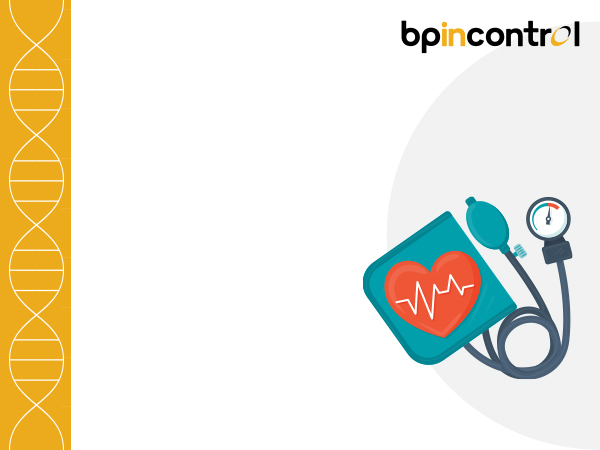Preeclampsia: Symptoms, Causes & Treatments

Table of Contents
Are you an expecting mother or someone who is planning to start a family soon? If so, it is essential to be aware of the risks that can arise during pregnancy, one of which is preeclampsia. This pregnancy complication affects millions of women worldwide, and if not managed properly, it can lead to severe health risks for both mother and baby. But don’t worry, we’re here to guide you through everything you need to know about preeclampsia, from its causes to available treatments.
Preeclampsia is a complex condition that affects various systems in the body, making it challenging to manage. However, with the right knowledge and treatment, it is possible to ensure a safe pregnancy. In this article, we will be breaking down preeclampsia and discussing the signs and symptoms to look out for, risk factors that can increase your chances of developing it, and how to manage the condition effectively. We’ll also be discussing topics like chronic hypertension in pregnancy, gestational hypertension, and hypertension treatment guidelines for pregnant women.
Whether you are a first-time mother or have experienced pregnancy complications in the past, this article will provide valuable information. So, let’s dive in and learn more about this important topic.
What is Preeclampsia?
Preeclampsia is a complex and potentially life-threatening condition that can arise during pregnancy, affecting the blood vessels that supply the placenta. It is a serious condition that typically develops after the 20th week of pregnancy and is characterized by high blood pressure and damage to organs such as the liver and kidneys. Preeclampsia affects up to 8% of pregnancies worldwide and is a leading cause of maternal and fetal morbidity and mortality.
Although the exact cause of preeclampsia is unknown, research suggests that problems with the placenta may play a role. In some cases, the blood vessels in the placenta may not develop correctly, leading to reduced blood flow and oxygen to the fetus. As a result, substances may be released into the mother’s bloodstream, which can cause the blood vessels to constrict, and raise blood pressure.
Preeclampsia in pregnancy can be a serious medical condition that requires immediate attention. It can affect various organ systems in the body, including the kidneys, liver, and brain, and can lead to complications such as eclampsia, stroke, and premature delivery. Managing preeclampsia can be challenging, and medical professionals will closely monitor blood pressure, urine protein levels, and symptoms to minimize the risks to both the mother and the developing fetus. It is essential for pregnant women to receive timely and appropriate care to prevent the development of this dangerous condition.
Symptoms of Preeclampsia
It is important to recognize the symptoms of preeclampsia to ensure timely medical intervention and prevent life-threatening complications. Here are some common symptoms of preeclampsia in pregnancy:
-
High blood pressure:
A blood pressure reading above 140/90 mm Hg is considered high and is a common symptom of preeclampsia.
-
Protein in urine:
Preeclampsia can cause protein to leak into the urine. This can be detected during a routine prenatal checkup.
-
Swelling:
Preeclampsia can cause sudden and severe swelling, especially in the face and hands.
-
Headaches:
Preeclampsia can cause severe headaches that are not relieved by over-the-counter medications.
-
Vision changes:
Preeclampsia can cause vision changes such as blurred vision, seeing spots, or sensitivity to light.
-
Upper abdominal pain:
Preeclampsia can cause severe pain in the upper abdomen, often accompanied by nausea and vomiting.
NOTE: Not all women with preeclampsia will experience symptoms, which is why routine prenatal care is crucial. Women with chronic hypertension or gestational hypertension are at a higher risk of developing preeclampsia and should be closely monitored.
Causes of Preeclampsia
While the exact cause of preeclampsia is not fully understood, several factors are known to increase the risk of developing the condition, including:
-
Abnormal placenta development:
Preeclampsia is believed to be caused by problems with the placenta, the organ that connects the developing fetus to the mother’s blood supply. An abnormal formation of blood vessels in the placenta can reduce blood flow to the fetus and trigger the release of certain proteins that can cause damage to blood vessels and organs.
-
Genetic factors:
Some studies suggest that genetic factors may play a role in the development of preeclampsia. Women with a family history of preeclampsia or who have a history of the condition themselves are at higher risk of developing the condition.
-
Maternal health conditions:
Chronic hypertension, diabetes, kidney disease, and autoimmune disorders are some of the maternal health conditions that can increase the risk of developing preeclampsia.
-
First-time pregnancy:
Women who are pregnant for the first time are at higher risk of developing preeclampsia than those who have had previous pregnancies.
-
Age:
Women who are younger than 20 or older than 40 are at higher risk of developing preeclampsia.
Treatment for Preeclampsia
Preeclampsia in pregnancy requires prompt medical attention. Treatment aims to manage symptoms, lower blood pressure, and prevent complications. Here are some common treatments for preeclampsia:
-
Monitoring:
Close monitoring of your blood pressure, urine protein levels, and other vital signs are essential to assess the severity of the condition and prevent complications. Your healthcare provider may recommend more frequent prenatal visits and monitoring to ensure prompt detection and management of preeclampsia.
-
Medications:
Medications can be prescribed to manage symptoms, lower blood pressure, and prevent seizures. Antihypertensive drugs, such as labetalol and nifedipine, can help lower blood pressure. Magnesium sulfate is an effective treatment for preventing seizures associated with severe preeclampsia.
-
Delivery:
In severe cases of preeclampsia, the only effective treatment is to deliver the baby. The timing and the method of delivery will depend on several factors, including the severity of the condition, the gestational age of the fetus, and the health of both the mother and the baby. If preeclampsia develops before the fetus has reached full term, delivery may be induced to prevent further complications.
-
Lifestyle Modifications:
Making lifestyle changes such as getting plenty of rest, avoiding certain foods, and limiting salt intake can help manage blood pressure and reduce the risk of complications. Your healthcare provider may also recommend avoiding alcohol and caffeine and increasing fluid intake to help prevent dehydration.
Note: If you have severe preeclampsia, your healthcare provider may recommend hospitalization to closely monitor your condition and provide necessary treatment. This may include intravenous medications to lower blood pressure, monitoring of fetal heart rate and contractions, and frequent blood tests to assess organ function.
Conclusion
Preeclampsia is a complex hypertensive disorder that can have an adverse impact on a woman’s health during pregnancy. While the cause of preeclampsia is still not fully understood, it is known to be a combination of genetic, environmental, and lifestyle factors. It is important for pregnant women to be aware of the symptoms of preeclampsia, such as high blood pressure, swelling, and protein in the urine, and seek medical attention if they experience any of them. Timely diagnosis and management of preeclampsia can help prevent serious complications, including seizures, organ damage, and even death.
Staying informed about preeclampsia and taking proactive steps to manage your health can make a significant difference in the outcome of your pregnancy. Remember to monitor your blood pressure regularly, make healthy lifestyle choices, and seek medical attention if you experience any symptoms of preeclampsia. By working together with your healthcare provider, you can help ensure a safe and healthy pregnancy for you.
Finding the right healthcare provider who can help manage blood pressure and overall health is crucial for individuals with preeclampsia. BP in Control offers a valuable resource in its Find a Physician webpage, which allows users to search for healthcare providers in their area who specialize in hypertension treatment guidelines for pregnant women. By finding the right doctor, patients can ensure that they are receiving the best possible care and treatment for their condition. Take control of your health and find a qualified healthcare provider today with BP in Control.
FAQs on Preeclampsia
1) Is preeclampsia bad for the mother?
Yes, preeclampsia can be very dangerous for the mother. It is a serious pregnancy complication that can lead to high blood pressure, damage to organs such as the liver and kidneys, and seizures (eclampsia), which can be life-threatening.
2) Who is at risk for preeclampsia?
Women who are pregnant for the first time, have a history of preeclampsia or high blood pressure, are carrying multiples, have a family history of preeclampsia, are obese, have diabetes, or have a pre-existing medical condition like lupus or kidney disease are at higher risk for developing preeclampsia.
3) Can preeclampsia go away?
In most cases, the only cure for preeclampsia is the delivery of the baby. However, in some cases, the symptoms can improve with bed rest, monitoring of blood pressure, and medication to lower blood pressure. After delivery, symptoms of preeclampsia usually go away within a few days.
4) Can walking prevent preeclampsia?
While regular exercise during pregnancy is generally recommended, there is no evidence that walking alone can prevent preeclampsia. However, staying active during pregnancy can help to reduce the risk of other pregnancy complications and improve overall health. It is important to consult with a healthcare provider about a safe exercise routine during pregnancy.
Disclaimer
The information contained in this article is to educate, spread awareness in relation to hypertension and other diseases to the public at large. The contents of this article are created and developed by BPinControl.in through its authors, which has necessary, authorisations, license, approvals, permits etc to allow usage of this articles on The Website. The views and opinions expressed in this article are views, opinions of the respective authors and are independently endorsed by doctors. Although great care has been taken in compiling and checking the information in this article, The Website shall not be responsible, or in any way liable for any errors, omissions or inaccuracies in this article whether arising from negligence or otherwise, or for any consequences arising therefrom. The content of this article is not a substitute for any medical advice. The Website shall not be held responsible or liable for any consequence arising out of reliance on the information provided in the article.


Comments (0)
No comments found.Add your comment